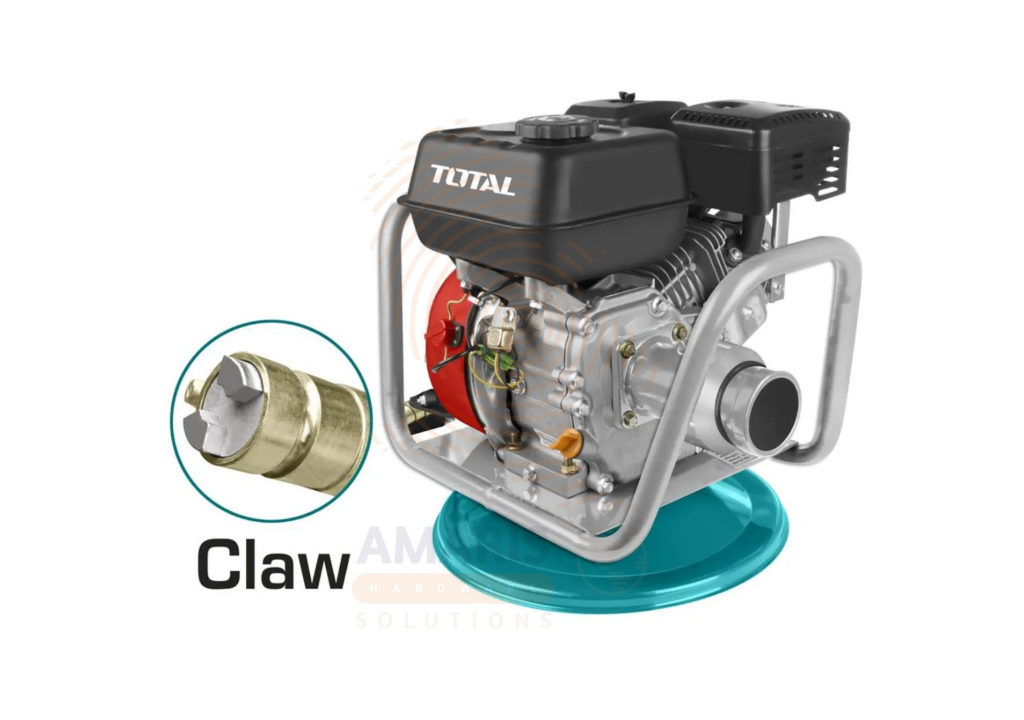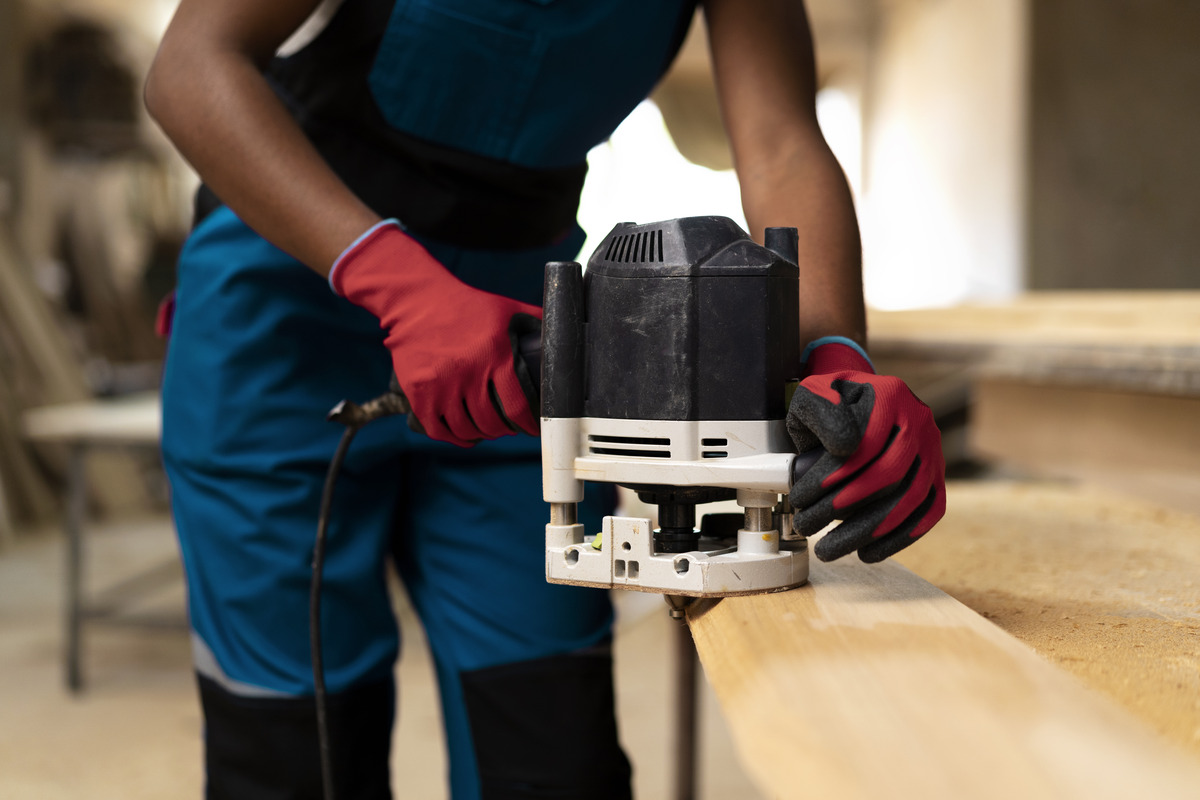“⚡ Shake It to Make It: How a Gasoline Concrete Vibrator Turns Slabs into Solid Perfection”

When you think about perfect concrete work, you probably picture smooth driveways, sturdy walls, and flawless slabs. What you don’t see is the secret weapon that makes all of that possible—the gasoline concrete vibrator. This tool might not get the same glory as a power saw or a drill, but without it, your concrete projects could end up riddled with air pockets, weak spots, and uneven density.
With its powerful motor and vibrating action, this machine eliminates trapped air and excess water from freshly poured concrete, ensuring the mixture settles compactly. The result? A denser, stronger, and longer-lasting structure.
So, What Is a Gasoline Concrete Vibrator?
It’s a construction tool powered by a gasoline engine that drives a flexible shaft with a vibrating head. The head is inserted into wet concrete, and the vibrations cause the mix to consolidate by shaking out voids and letting the aggregate settle evenly.
Why gasoline? Simple—freedom and power. Unlike electric models that require a cord and a power source, gasoline versions can be used anywhere, from remote construction sites to large outdoor projects.
Key Benefits of Using a Gasoline Concrete Vibrator
- Stronger Concrete 🏗️
Compacting concrete reduces air gaps, increasing structural integrity. - Improved Bonding
Vibration helps the concrete grip reinforcement bars for extra strength. - Faster Work
Large pours consolidate quickly, saving time and labor costs. - Better Finish
The end result is smoother, with fewer surface imperfections. - Portability
Go anywhere without worrying about finding an electrical outlet.
Common Uses in Construction
- Slab Foundations – Eliminating hidden voids beneath the surface.
- Columns & Pillars – Ensuring the concrete fills the form evenly.
- Bridges & Road Work – Creating durable, vibration-resistant surfaces.
- Precast Concrete Molds – Achieving consistent density in factory settings.
Pro Tips for Using It Like a Pro
- Work in Sections: Move the vibrator in a grid-like pattern to cover all areas.
- Don’t Over-Vibrate: Too much vibration can cause separation of aggregates.
- Insert Slowly, Withdraw Slowly: This ensures full consolidation and prevents voids.
- Keep the Head Vertical: Tilting can cause uneven distribution.
- Check Fuel Before Starting: Gasoline-powered means no running back mid-job for a refill.
Safety First ⚠️
- Wear protective gloves and hearing protection—the engine and vibration can be intense.
- Operate in a well-ventilated space to avoid inhaling exhaust fumes.
- Keep loose clothing and jewelry away from moving parts.
- Maintain a stable stance to avoid losing balance on wet surfaces.
Why Every Serious Builder Should Own One
Concrete is unforgiving—once it sets, there’s no going back. A gasoline concrete vibrator is like having an insurance policy for your pour. It guarantees that the job is done right the first time, saving you from costly repairs or premature cracking down the line.
Whether you’re a professional contractor working on large-scale builds or a serious DIYer tackling a driveway, this tool gives you the kind of confidence that only comes from knowing your concrete is rock-solid—literally.
It’s the difference between concrete that simply “looks okay” and concrete that stands the test of time. And when you’ve got an engine-powered beast at your disposal, you can take that quality anywhere the job calls you.
So next time you mix up a batch of concrete, remember: it’s not truly ready until it’s had a good shake. With a gasoline concrete vibrator, you’re not just pouring—you’re building for decades to come.


 Acrylic Sealants
Acrylic Sealants Construction Adhesives
Construction Adhesives Double-Sided Tape
Double-Sided Tape Duct Tape
Duct Tape Electrical Tape
Electrical Tape Epoxy & Resins
Epoxy & Resins Masking Tape
Masking Tape
 Automotive Wrenches & Socket Sets
Automotive Wrenches & Socket Sets Battery Chargers & Jump Starters
Battery Chargers & Jump Starters Car Jacks & Stands
Car Jacks & Stands Car Wash & Detailing Products
Car Wash & Detailing Products Diagnostic Tools
Diagnostic Tools Tire Inflators
Tire Inflators Vehicle Lighting
Vehicle Lighting Oil & Lubricants
Oil & Lubricants
 Adhesives & Sealants
Adhesives & Sealants Bricks & Blocks
Bricks & Blocks Cement & Concrete
Cement & Concrete Drywall & Plaster
Drywall & Plaster Flooring (Tiles, Wood, Laminate)
Flooring (Tiles, Wood, Laminate) Lumber & Plywood
Lumber & Plywood Paints, Primers & Coatings
Paints, Primers & Coatings Insulation Materials
Insulation Materials Roofing Materials
Roofing Materials
 Circuit Breakers
Circuit Breakers Electrical Cables & Wires
Electrical Cables & Wires Switches & Sockets
Switches & Sockets Fuses & Relays
Fuses & Relays Connectors & Terminals
Connectors & Terminals Electrical Boxes & Panels
Electrical Boxes & Panels Conduit & Fittings
Conduit & Fittings Lighting Fixtures & Bulbs
Lighting Fixtures & Bulbs Extension Cords & Power Strips
Extension Cords & Power Strips
 Anchors
Anchors Bolts
Bolts Clips & Clamps
Clips & Clamps Screws
Screws Nuts
Nuts Washers
Washers Rivets
Rivets Nails
Nails Threaded Rods
Threaded Rods
 Hammers
Hammers Measuring Tools (Tapes, Levels, Calipers)
Measuring Tools (Tapes, Levels, Calipers) Screwdrivers
Screwdrivers Pliers & Cutters
Pliers & Cutters Saws & Blades
Saws & Blades Chisels & Punches
Chisels & Punches Allen Keys & Hex Keys
Allen Keys & Hex Keys Ratchets & Socket Sets
Ratchets & Socket Sets Wrenches & Spanners
Wrenches & Spanners
 Power Tool Accessories (Blades, Bits, Discs)
Power Tool Accessories (Blades, Bits, Discs) Rotary Tools
Rotary Tools Saws (Circular, Jigsaw, Reciprocating)
Saws (Circular, Jigsaw, Reciprocating) Drills & Drivers
Drills & Drivers Grinders & Sanders
Grinders & Sanders Heat Guns
Heat Guns Nail Guns
Nail Guns Impact Wrenches
Impact Wrenches Batteries & Chargers
Batteries & Chargers
 Pipes & Fittings (PVC, Copper, PEX)
Pipes & Fittings (PVC, Copper, PEX) Plumbing Tools
Plumbing Tools Pumps & Motors
Pumps & Motors Sealants & Adhesives for Plumbing
Sealants & Adhesives for Plumbing Valves & Taps
Valves & Taps Water Heaters
Water Heaters Drainage Systems
Drainage Systems Faucets & Fixtures
Faucets & Fixtures Hoses & Tubing
Hoses & Tubing
 Hinges & Latches
Hinges & Latches Hooks & Brackets
Hooks & Brackets Window Hardware
Window Hardware Chains & Cables
Chains & Cables Casters & Wheels
Casters & Wheels Shelving & Storage Systems
Shelving & Storage Systems Door Handles & Locks
Door Handles & Locks Drawer Slides & Cabinet Hardware
Drawer Slides & Cabinet Hardware
 Personal Protective Equipment (PPE)
Personal Protective Equipment (PPE) Respirators & Masks
Respirators & Masks Safety Glasses
Safety Glasses Safes
Safes Security Cameras
Security Cameras Gloves
Gloves Helmets
Helmets Ear Protection
Ear Protection Fire Safety Equipment
Fire Safety Equipment Locks & Padlocks
Locks & Padlocks Motion Sensors & Alarms
Motion Sensors & Alarms
 Garden Fencing
Garden Fencing Garden Furniture Hardware
Garden Furniture Hardware Lawn Mowers
Lawn Mowers Trimmers & Edgers
Trimmers & Edgers Shovels & Spades
Shovels & Spades Rakes & Hoes
Rakes & Hoes Pruning Shears & Loppers
Pruning Shears & Loppers Watering Systems (Hoses, Sprinklers, Nozzles)
Watering Systems (Hoses, Sprinklers, Nozzles)
 Interior Paints
Interior Paints Paint Brushes & Rollers
Paint Brushes & Rollers Paint Strippers & Thinners
Paint Strippers & Thinners Paint Trays & Accessories
Paint Trays & Accessories Exterior Paints
Exterior Paints Spray Paints
Spray Paints Primers & Undercoats
Primers & Undercoats Varnishes & Stains
Varnishes & Stains
 Gaskets & Seals
Gaskets & Seals Hydraulic Fittings
Hydraulic Fittings Industrial Fasteners
Industrial Fasteners Industrial Hoses
Industrial Hoses Lubricants & Greases
Lubricants & Greases Metal Sheets & Bars
Metal Sheets & Bars Bearings & Bushings
Bearings & Bushings Belts & Pulleys
Belts & Pulleys
 HVAC Filters
HVAC Filters Insulation for HVAC
Insulation for HVAC Air Conditioners
Air Conditioners Refrigerants
Refrigerants Ventilation Ducts & Fittings
Ventilation Ducts & Fittings Thermostats & Controllers
Thermostats & Controllers Fans & Blowers
Fans & Blowers
 Pegboards & Hooks
Pegboards & Hooks Shelving Units
Shelving Units Storage Bins & Containers
Storage Bins & Containers Toolboxes & Tool Chests
Toolboxes & Tool Chests Workbenches
Workbenches Drawer Organizers
Drawer Organizers Labeling Supplies
Labeling Supplies
 Welding Accessories (Clamps, Brushes)
Welding Accessories (Clamps, Brushes) Welding Electrodes & Rods
Welding Electrodes & Rods Welding Helmets & Gloves
Welding Helmets & Gloves Welding Machines
Welding Machines Soldering Irons & Stations
Soldering Irons & Stations Flux & Solder Wire
Flux & Solder Wire
 Generator Accessories
Generator Accessories Inverters
Inverters Portable Generators
Portable Generators Power Inverters
Power Inverters Transfer Switches
Transfer Switches Diesel & Gasoline Generators
Diesel & Gasoline Generators
 Transport Equipment: Carts, Dollies, and Hand Trucks
Transport Equipment: Carts, Dollies, and Hand Trucks Storage Solutions: Pallets, Racks, and Containers
Storage Solutions: Pallets, Racks, and Containers Lifting Equipment: Hoists, Cranes, and Jacks
Lifting Equipment: Hoists, Cranes, and Jacks Conveyors and Accessories: Belts and Rollers
Conveyors and Accessories: Belts and Rollers



